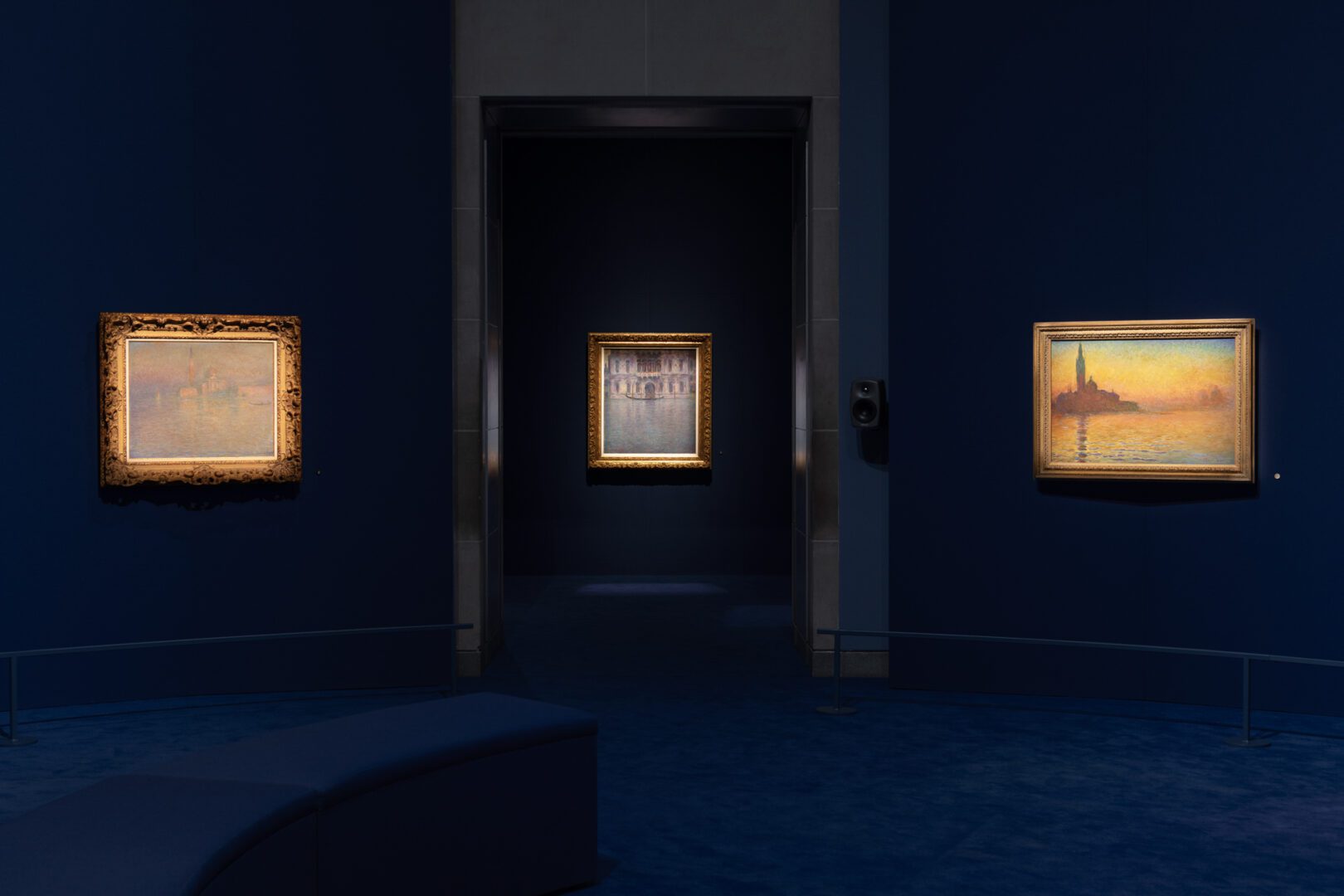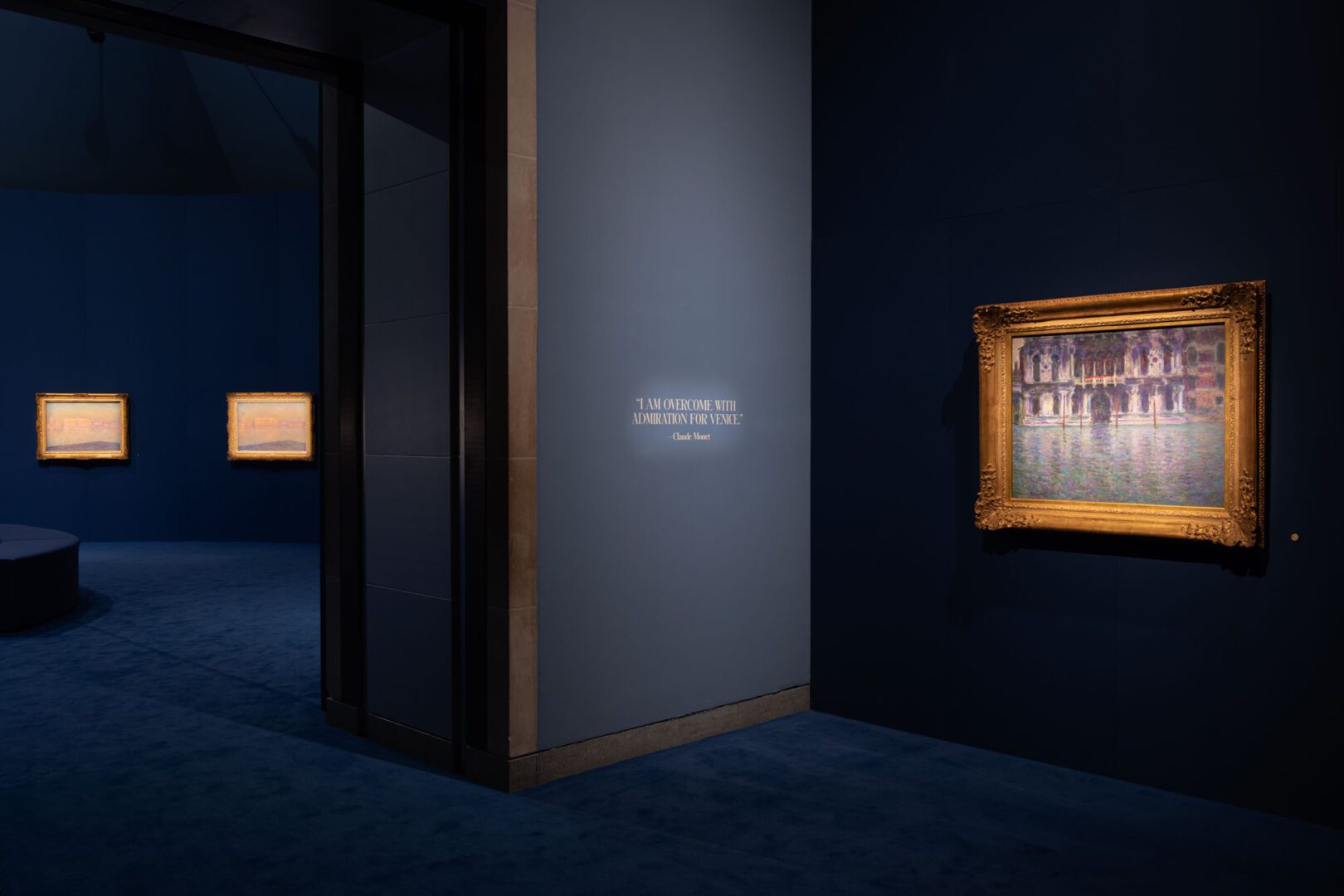The Brooklyn Museum’s Monet and Venice, the largest exhibition of Monet’s work in New York in over 25 years, is offering visitors more than a visual experience. The exhibition culminates in an immersive 4.1.4 Dolby Atmos® sound installation designed by composer-in-residence Niles Luther and powered by Genelec monitors, blending sight and sound to create a multisensory encounter with Monet’s Venetian masterpieces.

Co-curated by Lisa Small, the Brooklyn Museum’s Senior Curator of European Art, the exhibition presents Monet’s 1908 Venetian paintings alongside centuries of depictions of the city, from Canaletto to the early 20th century. “This is the largest museum presentation of Monet’s work in 25 years in New York City,” Small said. “We wanted to create something that felt both emotional and innovative, something you can feel as much as see. The Genelec system and Niles’s score made that possible.”
In the final gallery, visitors are enveloped by Luther’s original composition, rendered in a 4.1.4 Dolby Atmos format. The system includes four Genelec 8330 two-way studio monitors at ear level (front-left, front-right, rear-left, rear-right), four Genelec 8320 overhead monitors, and a Genelec 7350 subwoofer, all calibrated via Genelec Loudspeaker Manager (GLM) software. The configuration allows the music to flow naturally throughout the space, overcoming the challenges of a large, reverberant gallery.

As Luther explained, “I wrote a symphonic multi-channel, 4.1.4, down-rendered Dolby Atmos installation in the final room where Monet's Venice paintings reside... When you use sufficiently advanced technology and it’s deployed in a very careful, meticulous and thoughtful way, you get to this point where it almost becomes an illusion. … When you walk into that space, does it stop your heart? Does it make you catch your breath? We have achieved that in the final gallery room.”
The composer described the creative challenge of translating the paintings into music. “From the creative side, as a composer, part of the challenge was how do I take what’s contained in these paintings, and then translate them into the language of music. … All of this was possible because we were able to calibrate it within GLM, and I was able to take my master file and just come into the museum and it just plays back beautifully on the calibrated system.”

The use of Genelec’s Smart Active Monitoring system was critical in creating a natural and transparent listening environment, allowing Luther and the museum’s technical team to refine frequency balance and control reverberation. Paul Stewart, Senior Technical Sales Manager at Genelec Inc., highlighted the importance of precision monitoring. “This installation beautifully demonstrates how precision monitoring can elevate the emotional impact of art. Genelec systems are designed to disappear sonically, and what remains is the artist’s intent,” he said.
Small emphasized the uniqueness of the installation within the museum setting: “It sounds incredible. I mean, the symphony is beautiful. The paintings are beautiful. The design in the gallery and the speakers just makes the experience what it is... You won’t get too many other Monet exhibitions where a full-scale symphony is part of the experience.”
Monet and Venice runs through February 1, 2026, at the Brooklyn Museum. The exhibition offers visitors a rare opportunity to experience one of Monet’s most iconic series not only visually but through an enveloping, symphonic soundscape.
Read the Monet and Venice Genelec case study HERE.













